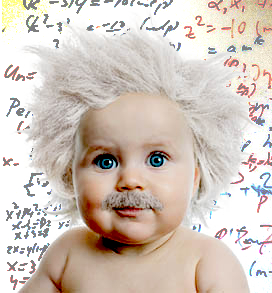AI aids baby brain watch
 Artificial intelligence could revolutionise the monitoring of brain development in children.
Artificial intelligence could revolutionise the monitoring of brain development in children.
Researchers at QIMR Berghofer have developed a computer-based 'growth chart' that could potentially transform the way paediatricians monitor child brain health and allow for earlier identification of neurodevelopmental delays.
Dr Nathan Stevenson and Dr Kartik Iyer, in collaboration with researchers and clinicians from Australia and Finland, designed a non-invasive AI application to chart a child’s brain age by monitoring their brain signals while asleep.
Using an electroencephalogram (EEG) to measure electrical activity in the brain, the QIMR Berghofer team developed the “growth chart” by applying machine learning algorithms to data from 2000 children from Finland and Australia.
Dr Stevenson said the tool could help clinicians identify neurological problems earlier, allowing for more effective therapeutic interventions and personalised management.
“Developmental delays affect the health of children and hinder their ability to reach their full potential,” he said.
“The European Brain Council and World Health Organisation acknowledge the need for better measures of early brain development. Our brain ‘growth chart’ is one such measure.
“We have mirrored the widespread use of physical growth charts, to create a neurodevelopmental growth chart which facilitates rapid and easy clinical assessment of early-life brain maturation and health.”
More than 10 per cent of children worldwide have a clinically relevant neurodevelopmental delay. Major contributors include prematurity, acquired brain injury, structural brain abnormalities, exposure to toxins, and childhood epilepsies.
Dr Iyer said their tool charts a child’s neurodevelopmental age against their true birth age, to track brain health. The team last year applied similar AI technology to the electrocardiogram (ECG) heart monitoring data of pre term babies to give paediatricians better information about development, but the brain age tool takes the technology to a new level.
“By extracting precise information from the EEG signal, we can predict brain age and measure how this differs from a child’s actual age. If brain age is lagging for example, this can help facilitate a conversation between a clinician and a child’s caregiver on their neurodevelopmental progress,” he said.
Dr Jasneek Chawla, Paediatric Respiratory and Sleep Medicine Physician at the Queensland Children's Hospital, collaborated with the QIMR Berghofer team on the project and said the new tool is an exciting development.
“Brain age is one of the most important measures we have for children. This brain growth chart is an easy to use tool which has the potential to advance clinicians’ understanding incredibly, helping to inform early intervention strategies and predict future cognitive status,” said Dr Chawla.








 Print
Print